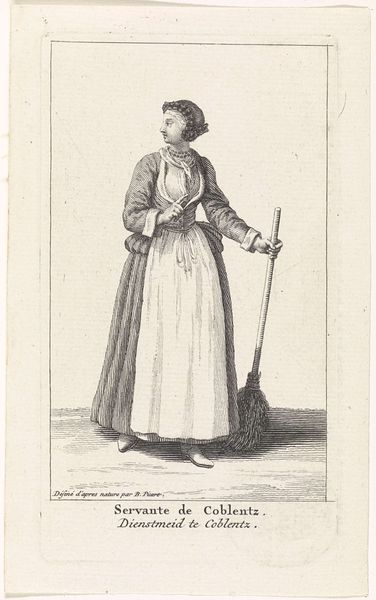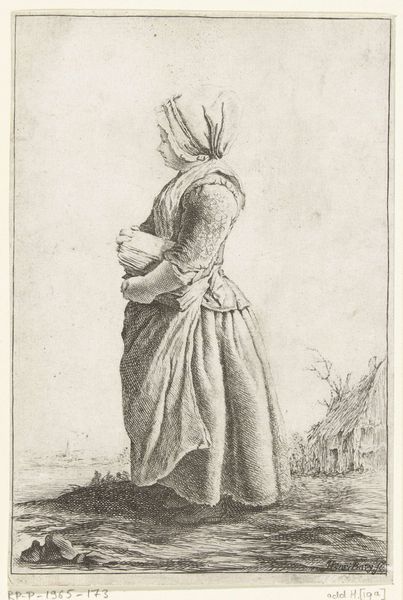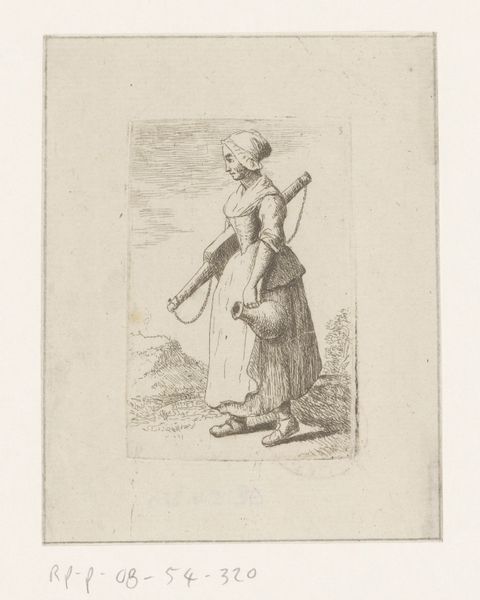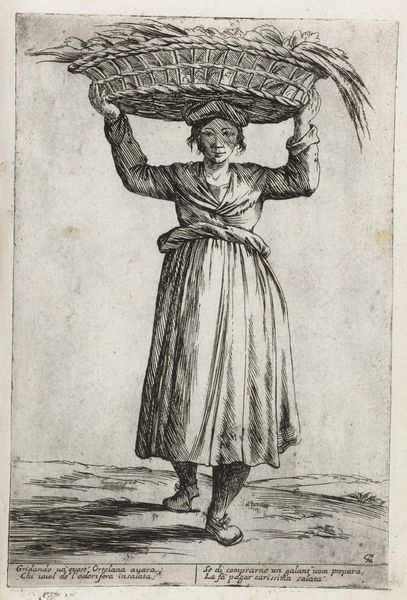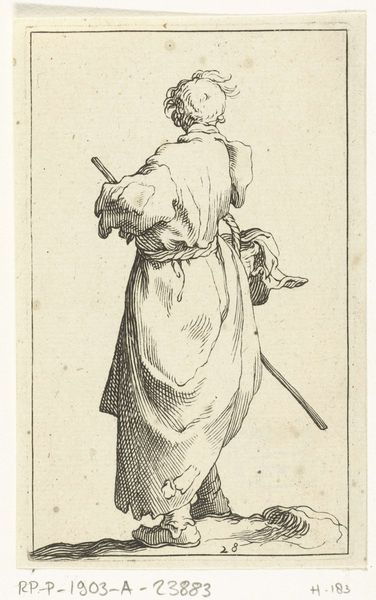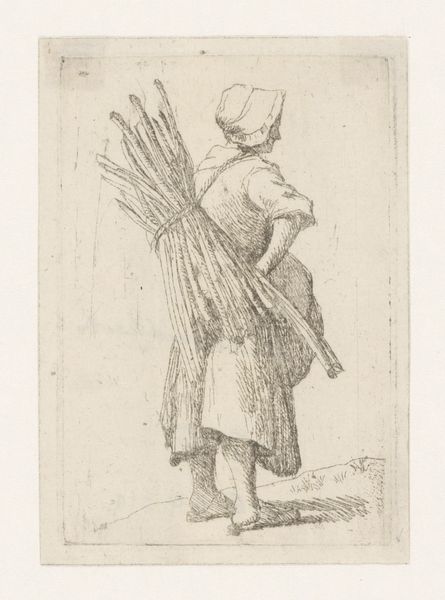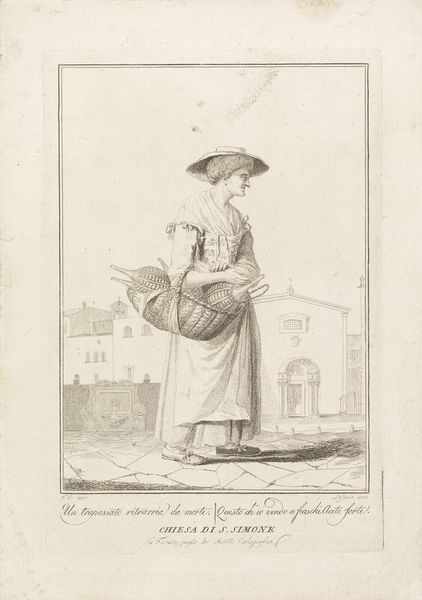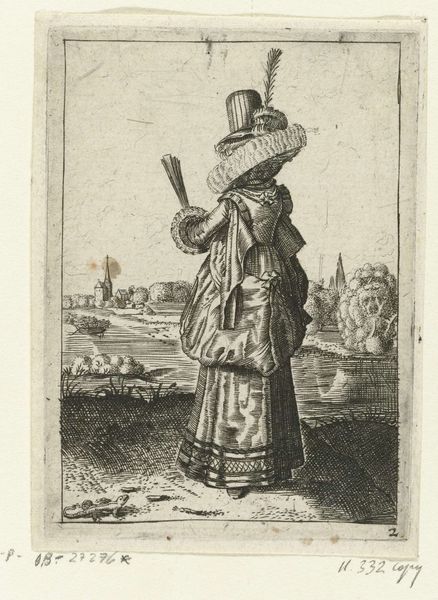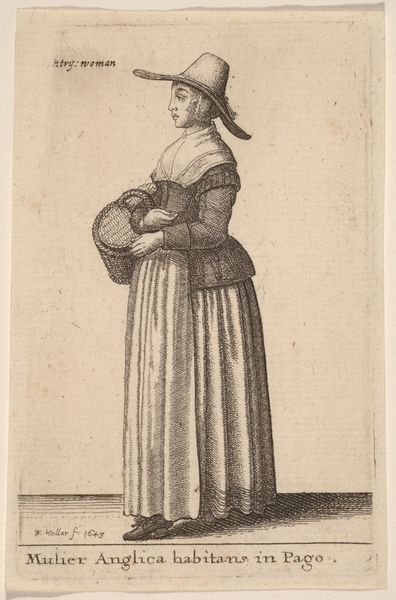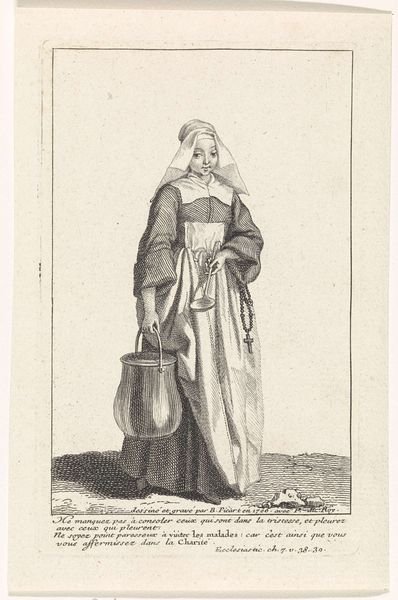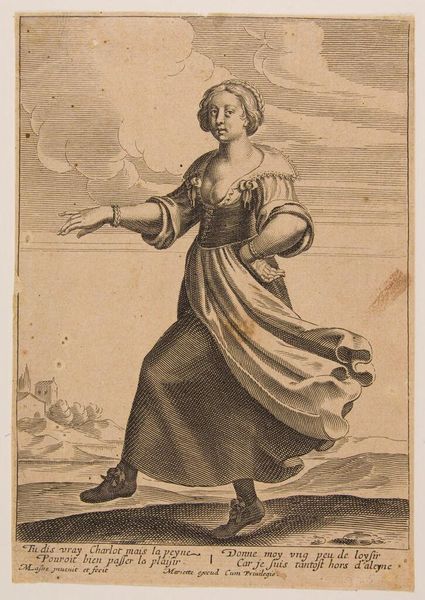
print, engraving
#
portrait
#
baroque
# print
#
old engraving style
#
genre-painting
#
engraving
#
realism
Dimensions: height 128 mm, width 72 mm
Copyright: Rijks Museum: Open Domain
Editor: This is "Boerin uit Keulen," or "Farmer's wife from Cologne," an engraving by Bernard Picart from 1728. It feels like a very grounded and almost documentarian image. What's your perspective on this print? Curator: What I see immediately is a commentary on labor and class. We see not a noble portrait, but a rendering of a woman explicitly tied to agricultural work. The medium, engraving, itself is interesting. It’s a relatively reproducible medium. Was it designed for a broad audience, showcasing and perhaps exoticizing the laboring class? Editor: That's fascinating. I hadn't considered the social implications of the print medium itself. Does her attire factor into this reading? Curator: Absolutely. The clothes, the tool, these are all material realities. How might her specific clothing -- the fabric, the cut -- reflect regional identity or the economic conditions of rural Cologne at that time? Consider also her tools. What can be inferred about how these tools shaped her life and her body? What specific physical acts would leave a mark on her life? How available was that kind of material in Cologne, at that time? Editor: It’s so different from the idealized portraits you usually see from this period. This feels… real. Curator: Precisely. It challenges conventional boundaries between "high art" and a grittier, lived reality. We can discuss art using the same materialist perspective, investigating the socio-political environment around making, trading, and using of a print. Editor: I see how focusing on materials, tools and the social context gives it a whole new layer of meaning. Thank you! Curator: Of course. Keep your eye on the ways in which labor, tools, and making affect art itself.
Comments
No comments
Be the first to comment and join the conversation on the ultimate creative platform.
